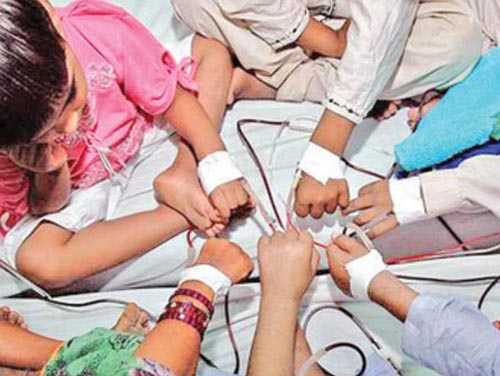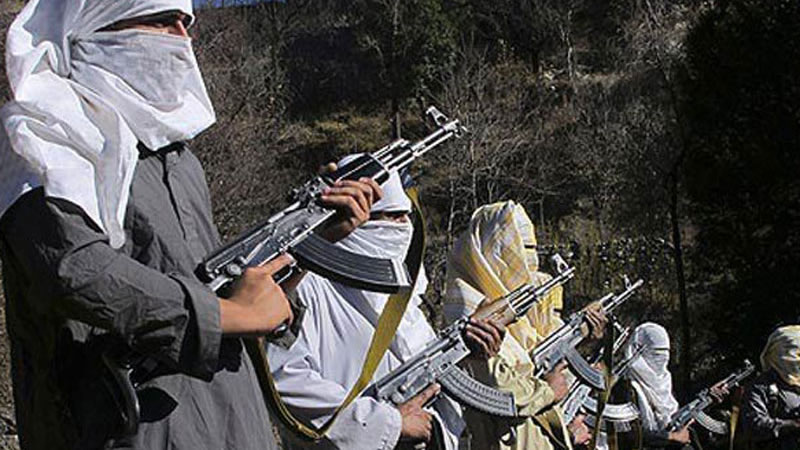What is Thalassemia?

Blood is a very important component of human body. Its circulation gives a healthy look of reddish color to our body. If there occurs some decrease in the quantity of blood, the skin’s color resultantly fades away, in medical term; this condition is called “Anemia”. Its causes are numerous, but the main cause is called “Thalassemia”. Thalassemia is a hereditary disease which the patient receives it from his parents.
Due to this disease, the patient, since his birth, has very little or no capability to produce blood in the body. So on this vary basis, there are two kinds of thalassemia. The first one is called “Thalassemia Minor”. Its main cause is that the blood production capability in the body is lesser than a common man’s ability. The second type is called “Thalassemia Major” as the patient has very little or no capability to produce blood in the body.
Thalassemia Minor:
An apparently it is a harmless disease showing no symptoms at all but the defect in the patient’s body has exist, as he receives it from his mother or father. So his blood producing capability is quite less. Strangely enough, this defect does not affect patient’s day to day activities. However, such type of patients can be identified on by through some special lab tests. According to a survey, above 50% population of Pakistan is suffering from Thalassemia Minor and they are source of infection for their children.
Thalassemia Major:
It is a highly serious type of disease in which the diseased children get it from their parents already suffering from “Thalassemia Minor”. They have little capability to produce blood in their body. Six months after their birth, they normally remain healthy. But later, symptoms of anemia start appearing in their body. At the age of one year, the patient child starts losing its color and its growth is also reduced. The stomach of child is swelled due to growth in the liver and spleen. It also generally suffers from fever and inflammation in chest and such patient’s life totally depends on the transfusion of blood. Patient of this type are also identified through some special lab tests.
Blood Transfusion:
For the physical growth of those children suffering from thalassemia major, continuous blood transfusion is necessary. This process should almost be monthly based and in this connection, some points must always be kept in mind. The basic purpose of transfusion is to ensure that the quantity of hemoglobin in the child’s body should not be reduced from 10gm. If this point fully covered than the affected child’s physical growth can be like that of a normal child. Unfortunately, the acquisition of suitable blood is quite difficult in our country. Anyhow efforts may always be made that a sick child be given transfusion when its hemoglobin level comes down to 10gm otherwise child’s physical growth will be affected and its spleen will also start swelling.
Bone Marrow Transplantation:
The actual and complete treatment of this disease is bone marrow transplantation (BMT) which is quite difficult and costly. Sick patients do not always get a donor of bone marrow, even at the expense of a huge amount of money. So, one has to content with blood transfusion.
Inherited Thalassemia:

Following chart shows the spread of inherited disease of thalassemia among children:
While keeping in view the details of above chart, we learn following important points:
i) If both the parents are patients of thalassemia minor, then there are 25% of chances that their child will be a patient of thalassemia major.
ii) If one spouse of parents is healthy will the other is a patient of thalassemia, then their child will not be having thalassemia major disease.
iii) In case both the parents are patients of thalassemia minor then there are chances (25+25=50%) that their children will be having thalassemia minor while 25% chances are that their children will be healthy.
iv) If a person having thalassemia minor or major then there are chances that his sisters, brothers and other blood relations will also be suffering from this disease.
On the basis of above information, some preventive measures can be adopted against this disease. Following are the details:
1) For Unmarried Persons:
The unmarried persons through a special test should make sure that they are not patients of this disease, if it is, however, not possible that a bone test should be conducted in Pakistan. But there is a simple alternate; if a family having a patient of thalassemia major, then all family members should undergo the above test.
Practical experience has shown that through special tests, a large member of such persons can easily be identified who apparently look healthy but they are actually Thalassemia minor patients. When an unmarried person is proved as being the patient of thalassemia, it requires to be ensuring that his or her spouse should not also be a patient of thalassemia. Otherwise, the result could be dangerous. So the above-mentioned easy precautionary step can save a person from a difficult situation.
Tests for Thalassemia before Marriage:
Testing for the Thalassemia Trait usually happens in two parts:
Indicative Test: Complete Blood Count Test
•This test is the same as the simple blood test that most employees go through this test during pre-employment checkups. However, most employers do not actively look for the Thalassemia Trait.
•Costs roughly up to Rs. 700.
•Available at most laboratories or hospitals.
Confirmatory Tests: Hb HPLC or Hb Electrophoresis for Hb A2 Estimation
•Required only if the indicator test is positive.
•Costs roughly up to Rs. 1400.
•Available at select testing centers and big hospitals only.
2) For Married Persons:
Those married couples (except patients of Thalassemia major) who are having a good member of healthy children, are better not to have more siblings, so that they may not have thalassemia affected children. However, if parents want to have more children, they may like to have following test.
Test during Pregnancy-CVS:
For the first time, this test was introduced in Pakistan in May 1994. And since then, a large number of persons have taken benefit from it. This test is quite important for those parents who intend to have a small but healthy family. It facilitates us to confirm whether an unborn child is suffering from thalassemia major or not.
Islamic View about Tests for Checking Hereditary Diseases during Pregnancy:
Pakistan is an Islamic state where a large majority of patients does strictly follow Islamic orders on different important issues concerning their daily life. In such a social set-up, it is natural that the patients show their hesitance on the question of taking benefit of modern medical facilities and abortion. In this connection, a well-known Islamic scholar, Mufti Maulana Muhammad Taqi Usmani of Darul Ifta, Karachi, was recently contacted for getting a “Fatwa”. This Fatwa allows abortion before completion of 120 days of pregnancy in order to avoid Thalassemia-affected child’s birth. Below is the copy of Fatwa.
Conclusion:
It is concluded that we can overcome this disease by conducting awareness sessions at our work places, distributing awareness literature and campaigning door to door as well. By giving awareness to the people we must minimize the effect of this disease and also we have to come forward to donate blood for those patients who are suffering from Thalassemia Major. A lot of NGO’s and Welfare Institutes are working in Pakistan for this dreadful disease. We have to support these organizations to raise fund for the patients of Thalassemia Major which may be treated by Bone Marrow Transplantation.
Autor:
Rana Naveed ur Rehman












